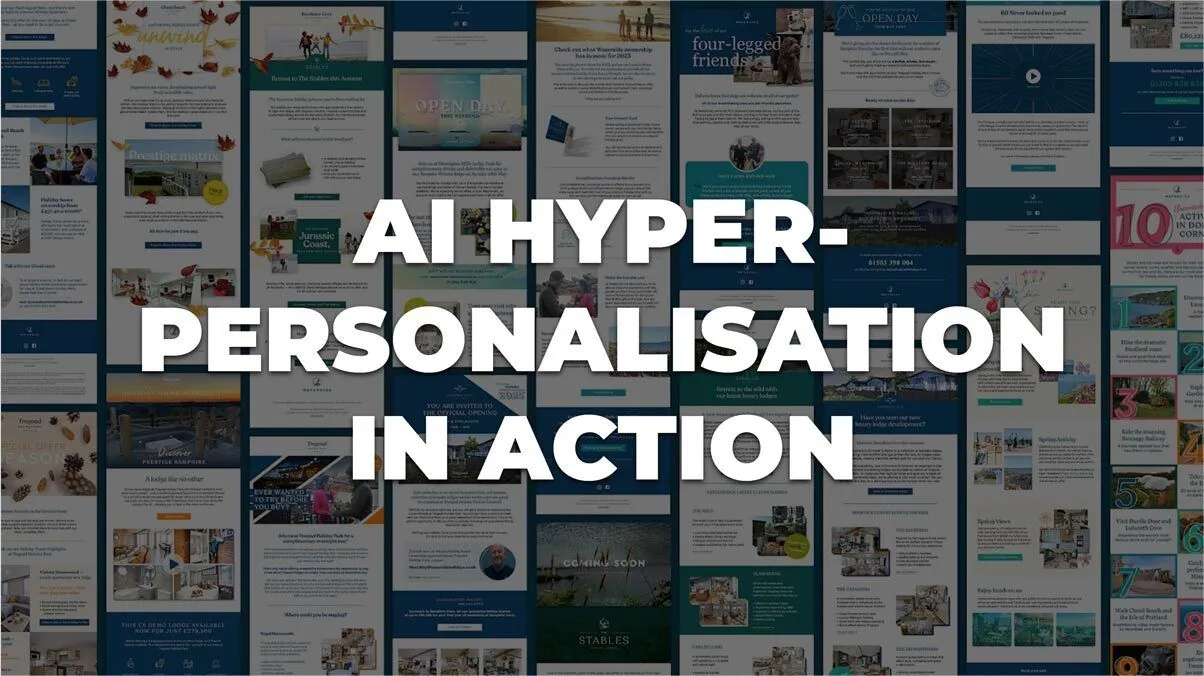Don't fail with AI content
In a recent interview with CMO Jason Tsai we explored AI in marketing. This follow up blog looks at one of the key outtakes from that interview.
How to avoid the obvious - creating more, lots more, more than people want - of the same content, and instead leverage AI to create hyper-personalised content.
13 minute read
28th June 2024
Starting with the basics - what is Hyper-Personalisation
Hyper-personalisation involves using advanced data analytics and AI to create highly tailored content to individual users or specific audience segments.
It goes beyond traditional personalisation by considering real-time data and behavioural insights to create more relevant and engaging experiences.
Key components of Hyper-Personalised Marketing
Data Collection and Analysis:
- Collect data from various sources, including customer behaviour, demographics, purchase history, and interactions across digital channels.
- Use AI and machine learning algorithms to analyse this data and identify distinct audience segments with specific preferences and behaviours.
NOTE:
Your data doesn’t need to be perfect. AI platforms can quickly learn from fragmented data, fill gaps, and analyse real-time behaviour to create actionable insights.
Often, you know more about your customer than your content shows. Which leads us to the next component.
Dynamic Content Creation:
- Develop a core piece of content that serves as the foundation. This could be a comprehensive article, video, or infographic.
- Use AI-powered tools to dynamically adapt and personalise this core content for different audience segments. This might involve changing the tone, messaging, images, or even the product USP’s within the content.
Real-Time Personalisation:
- Implement AI-driven personalisation engines that can deliver the right content to the right audience at the right time, based on real-time data and user interactions.
NOTE:
We create a wealth of valuable content, from white papers to explainer videos, but convincing clients to develop variations based on the audience has, in the past, been an uphill battle.
Blending our human experts with trained AI modals we can now rapidly create variations that enable the hyper-personalised content we all dreamt of.
Distributing Hyper-Personalised Content:
- Use Multi-Channel Deployment models to ensure your personalised content reaches your audience across multiple touch points, including email, social media, websites, and mobile apps. Each channel should cater to the specific behaviour and preferences of its users.
- Develop channel specific strategies. For example, personalised email campaigns with customised subject lines and product recommendations, social media posts with varying visuals and messaging for different audience segments, and website personalisation with dynamic content blocks based on user interactions.
NOTE:
None of this is new per se, but it’s all now infinitely easier. Meaning if you aren’t doing it right now, one of your competitors is.
And yes, infrastructure, resources, your mar-tech limitations - all of this might be holding you back. But working with us we can find shortcuts and hacks to help you make giant leaps towards this content utopia. Because if Marketing can demonstrate the value of just one campaign and show how AI enabled this incremental ROI, the limitations start getting removed pretty quickly!

Examples of how we have adapted content to Hyper-Personalised Content
- Core Content Development
An article about financial planning served as the core content. It covers general tips, strategies, and benefits relevant to a wide audience. - Data Collection and Audience Segmentation
We segmented the audience into groups such as young professionals, retirees, and small business owners, each with unique financial planning needs. - Dynamic Content Adaptation
For young professionals we emphasised tips on saving for a first home. For retirees, we focused on managing retirement funds. For small business owners we highlighted financial planning for business growth. - Real-Time Personalisation
We wanted to create a CRO optimised landing page which dynamically adapted content based on the visiting audience, but we couldn’t. So we manually created x4 versions of the landing page. When a young professional visits the web page, they see content tailored to their stage in life, while a retiree sees information relevant to their retirement planning. - Multi-Channel Distribution
We created email newsletters with personalised financial tips to young professionals, social media ads targeting retirees with relevant content, and developed customised articles on the website based on user profiles which we linked to from all sources.
NOTE:
Any one of these changes to a Hyper-Personalised model will deliver a better ROI, but having an integrated agency like bbd tie it all together creates a user experience designed to deliver results.
Conclusion
Hyper-personalised marketing content for multiple segments from the same source content leverages the power of AI and data analytics to deliver highly relevant and engaging experiences and delivers a higher ROI.
What's next?
In the interview with CMO Jason Tsai we also discussed how AI will evolve what we consider Content Marketing.
So Hyper-Personalisation is great. But why are we still thinking about content as white papers or infographics?
AI lets us do so much more!
If you want to know how you could be leveraging AI for Hyper-Personalisation or are intrigued by how AI can create new formats for your content then get in touch today.

